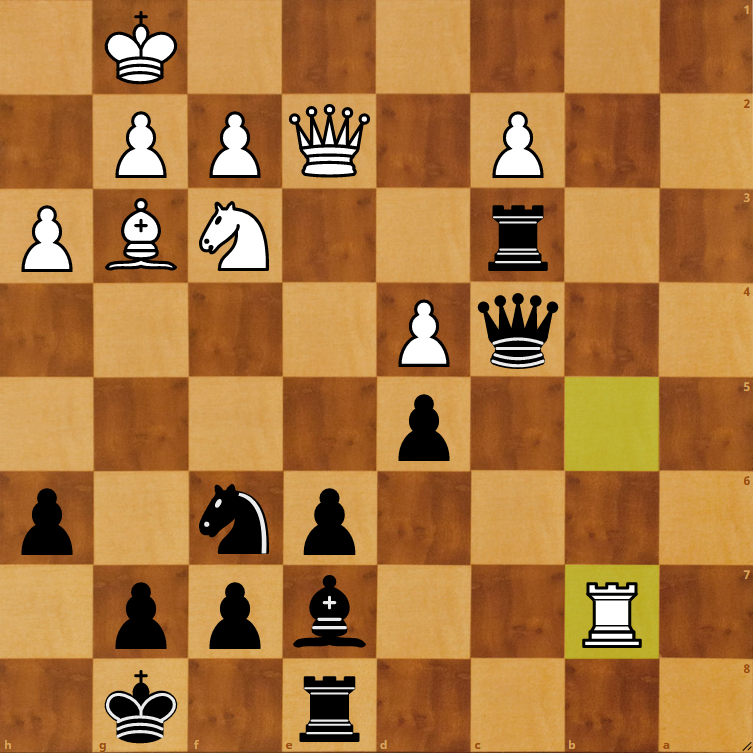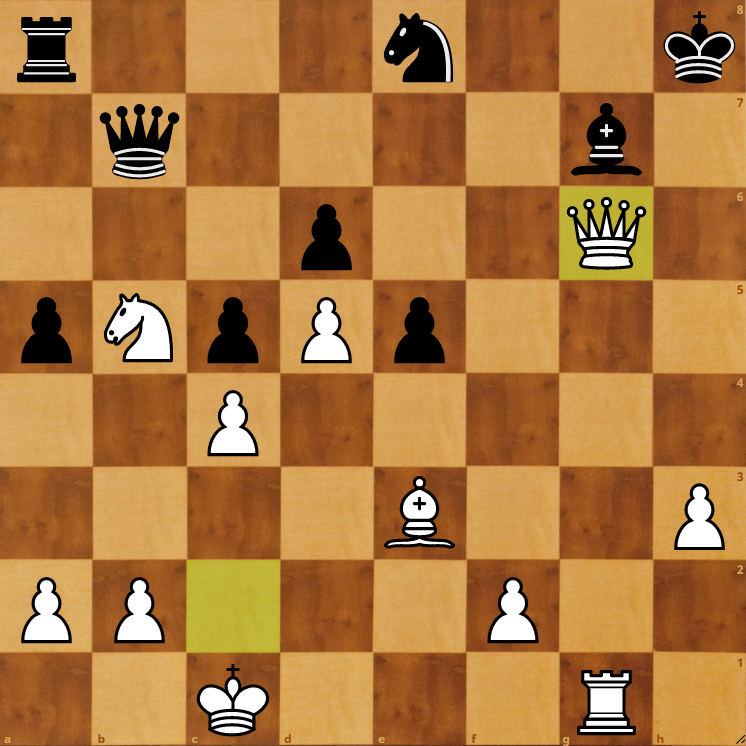
While not a Panov game I came to the realization during analysis of how uncomfortable it is for me to play against. I spent a fair bit of time talking about c4 and the ways to prevent the discomfort, I’ve only found one line that’s enjoyable for me if White plays properly. If White doesn’t play the most accurate moves then the position is completely fine.
As many Caro games do, this one came down to pressure on the c file and White’s inability to counter it. Here is the position I’ll start the analysis from, everything before was decent opening play.

You can already see how easy it can be to play against the backwards c pawn. It’s also possible to play a knight route like c8-b6-c4 and have a strong knight outpost. All of my games come down to a fight on the Queen side and it tends to feel like White has the only major weakness there.

White made the first major mistake with Ne5. After Nxe5 dxe5 I am able to pressure c2 with tempo after Qc6and begin to stack all three major pieces against it. By taking with the pawn the bishop on f4 becomes much worse for the time being also. Nf5 is also a threat eyeing the isolated d pawn.

Here White has a few options as the c pawn isn’t immediately under threat but they must be careful. If they allow Qxd3 cxd3 then Rxc1 and the knight is still threatening to come to d4 and add a 4th attacker to the c pawn. With the pressure White swaps Queens off which is a safer move but I still maintain a -3 advantage. The problem being the same as before Qxc4 Rxc4 and then Nd4 comes with the triple attack on the c2 pawn and tempo on the rook.

Once the rooks come off and the pawn falls the position is as follows below, the position is lost for White since the center pawn control prevents their King from getting to my back line to find counter play. After this it’s just a matter of pushing forward and cutting the White King off while I creep on the Queen side.















